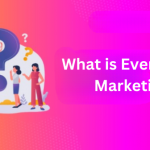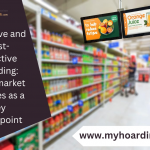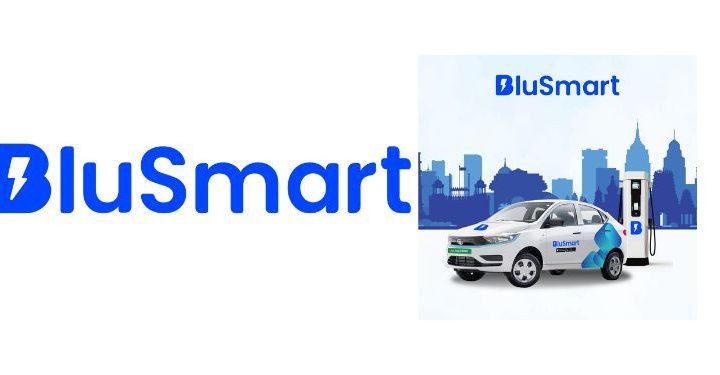Increase Sales of Your FMCG Products
5 min read
How to Increase Sales of Your FMCG Products: A Comprehensive Guide by MyHoardings
In the fast-paced world of Fast-Moving Consumer Goods (FMCG), increasing sales requires a strategic blend of marketing, brand differentiation, and customer engagement. As a leading advertising agency, MyHoardings offers proven methods to help you boost your FMCG product sales. Here’s a detailed guide on how to market and sell your FMCG products effectively.

1. Leverage Digital Marketing
Social Media Marketing Social media platforms like Instagram, Facebook, and Twitter are powerful tools for showcasing your FMCG products. Regularly post engaging content, including product launches, usage tips, and behind-the-scenes looks at your brand. Use relevant hashtags and collaborate with influencers to expand your reach. Engaging visuals and interactive posts can attract and retain customers.
Email Marketing Build and maintain an email list of potential and existing customers. Send regular newsletters featuring updates on new arrivals, exclusive discounts, and usage tips. Personalized email campaigns can significantly boost sales and foster customer loyalty. Use data analytics to segment your audience and tailor your messages to different customer groups.
Content Marketing Develop valuable content such as blog posts, videos, and guides on topics like product usage, benefits, and comparisons. High-quality content can attract and engage your audience, driving them to purchase. Additionally, educational content can establish your brand as an authority in the FMCG sector.
2. Collaborate with Influencers
Partner with influencers who align with your brand values and have a following that matches your target market. Influencers can create authentic, engaging content featuring your FMCG products, driving their followers to your brand. Influencer marketing helps build trust and credibility, making it easier to convert followers into customers.
3. Optimize for Local Searches
Many customers prefer to buy FMCG products locally. Ensure your online presence is optimized for local searches by claiming your business on Google My Business. Encourage satisfied customers to leave positive reviews and keep your business information current. Local SEO can help you attract customers who are searching for products in your area.
4. Offer Virtual Product Demonstrations
In today’s digital age, offering virtual product demonstrations can set you apart. Use video conferencing tools to provide personalized sessions and product recommendations, building a stronger connection with your customers and increasing sales. Virtual demonstrations can also be shared on social media and your website to reach a wider audience.
5. Enhance In-Store Customer Experience
Visual Merchandising Invest in high-quality visual merchandising to create appealing and inviting displays that effectively showcase your FMCG products. Well-designed displays can attract attention and encourage impulse purchases.
Customer Service Train your staff to deliver exceptional customer service. Knowledgeable and friendly staff can significantly influence buying decisions. Ensure that your employees are well-versed in product knowledge and can assist customers effectively.
6. Utilize Data Analytics
Analyze data from your website, social media, and sales to understand customer behavior. Identify which products are most popular, what marketing strategies are working, and where there is room for improvement. Data-driven decisions can help optimize your marketing efforts and boost sales. Use analytics to track the performance of different campaigns and adjust your strategies accordingly.
7. Run Targeted Advertising Campaigns
Google Ads Use Google Ads to target potential customers searching for FMCG products online. Utilize various ad formats, such as text ads, shopping ads, and display ads. Ensure that your ads are well-designed and include compelling calls to action.
Social Media Ads Run targeted ads on social media platforms. Use advanced targeting options to reach specific demographics, interests, and behaviors that align with your ideal customer profile. Social media ads can help you reach a large audience and drive traffic to your website or store.
8. Offer Promotions and Discounts
Everyone loves a good deal. Run regular promotions and offer discounts to attract more customers. Consider seasonal sales, bundle offers, and loyalty programs to incentivize purchases. Limited-time offers can create a sense of urgency and encourage quick purchases.
9. Collaborate with Food Bloggers
Partner with food bloggers who can recommend your FMCG products to their audience. Offer them commissions or discounts on bulk purchases to foster a mutually beneficial relationship. Bloggers can create in-depth reviews and recipe ideas that feature your products, helping you reach a new audience.
10. Participate in Trade Shows and Exhibitions
Trade shows and exhibitions provide excellent opportunities to showcase your FMCG products to a large audience. Ensure your booth is attractive, staff are well-trained, and you have plenty of promotional material to distribute. Networking with other businesses and potential customers at these events can help increase brand awareness and sales.
Conclusion
Increasing sales of your FMCG products requires a multifaceted approach. By leveraging digital marketing, collaborating with influencers, investing in quality content, optimizing for local searches, and enhancing customer experiences, you can significantly boost your sales. At MyHoardings, we specialize in creating tailored advertising strategies that drive results. Contact us today to learn how we can help elevate your FMCG brand to new heights.

For personalized advertising solutions and expert marketing advice, reach out to MyHoardings. Our team of professionals is dedicated to helping your business succeed in the competitive world of FMCG sales.
How To Create Quality Video Ads
|













